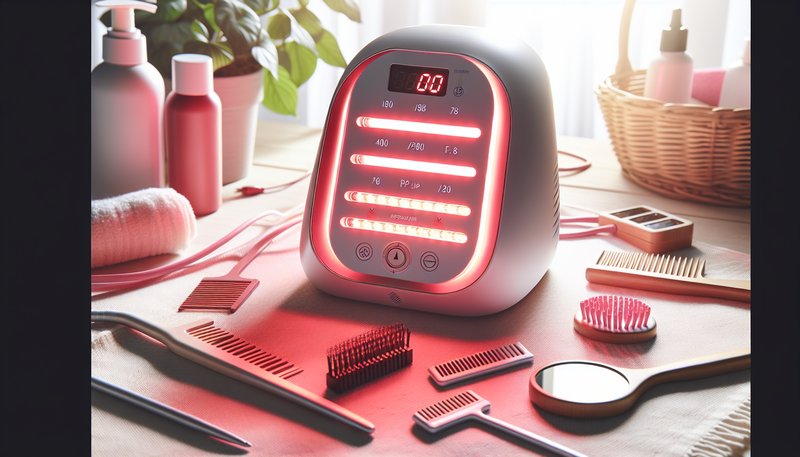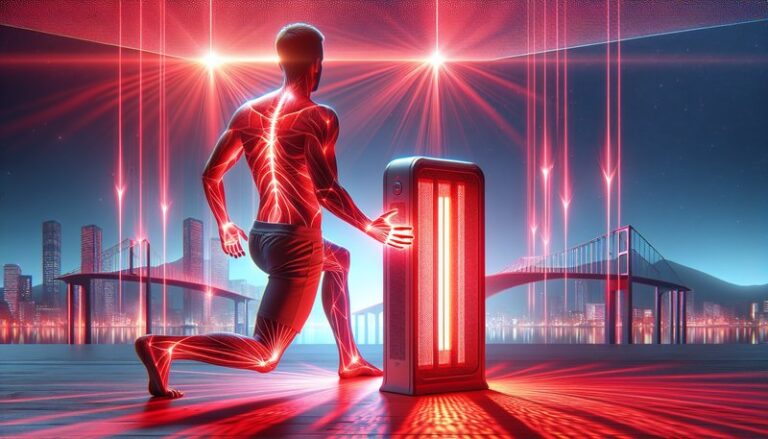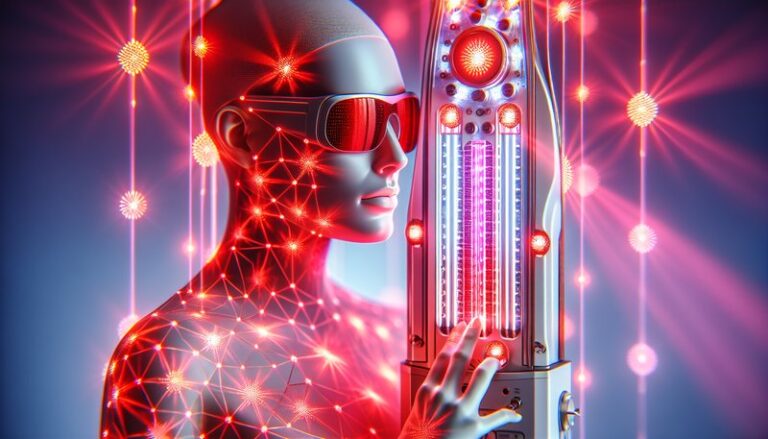Does Red Light Therapy Work For Hair Loss?
Does Red Light Therapy Work For Hair Loss?
Are you struggling with hair loss and seeking effective solutions?
This article examines the role of red light therapy (RLT) in treating hair loss, exploring how it functions, the benefits it offers, the considerations to take into account, and alternative treatments available. By the end, you’ll have a comprehensive understanding of whether RLT is a suitable option for you.
Key Takeaways
- Red light therapy has shown promise in stimulating hair growth and improving scalp health.
- The technology works by enhancing cellular activity, potentially leading to increased hair thickness and density.
- While RLT is generally safe, there are several factors to consider before starting treatment.
What is Red Light Therapy?
Red light therapy is a non-invasive treatment that uses low-level wavelengths of red light, typically between 600 to 660 nanometers, to promote healing and regeneration of cells. This form of therapy is also known as low-level laser therapy (LLLT) and has various applications, including pain relief, skin rejuvenation, and hair restoration.
In the context of hair loss, RLT is believed to stimulate hair follicles, increase circulation to the scalp, and enhance cellular respiration. By doing so, it may foster healthier hair growth and slow down hair loss.
Mechanism of Action
The primary mechanism by which RLT promotes hair growth is through photobiomodulation, a process where photons of light are absorbed by skin cells, resulting in an increase in cellular energy (ATP). This boost in energy can enhance cellular repair and regeneration, potentially revitalizing dormant hair follicles.
What are the Benefits of Red Light Therapy for Hair Loss?
When considering hair restoration treatments, the benefits of red light therapy stand out. Below are key advantages that may contribute to its effectiveness.
Stimulates Hair Growth
Numerous studies have shown that RLT can stimulate hair follicles, with some users experiencing noticeable hair regrowth. Clinical trials have reported improvements in hair count and thickness after consistent use of RLT devices.
Improves Scalp Health
RLT isn’t solely about hair; it also promotes overall scalp health. By increasing blood circulation and reducing inflammation, users may see a healthier scalp environment, which is crucial for optimal hair growth.
Non-Invasive and Safe
One of the most appealing aspects of RLT is that it is a non-invasive treatment option. This means there is minimal risk of side effects, such as those associated with surgical procedures or stronger medications.
Painless Treatment
Patients using RLT devices typically report no pain or discomfort during treatment. This makes it an attractive option for those who are apprehensive about more invasive procedures.
Get informed with Time for Red Light Therapy Results?
Is it Possible to Use Red Light Therapy for Hair Loss?
Yes, it is possible to use red light therapy as a treatment for hair loss. It can be performed using at-home devices or professional treatments available at clinics and salons.
In both formats, consistency is key to experiencing optimal results. Regular sessions, often recommended several times a week, are necessary for effective outcomes.
What are the Advantages of Using Red Light Therapy for Hair Loss?
Given its accessibility and safety, several advantages make RLT a compelling choice.
Cost-Effective Long-term Treatment
While initial costs for devices may be higher, the long-term savings can be significant compared to ongoing costs for medications or procedures.
Convenience of At-home Use
Many red light therapy devices are designed for home use, allowing users to incorporate treatments into their daily routines without needing regular clinic visits.
Enhanced Hair Health
Beyond promoting growth, RLT may fortify existing hair, leading to stronger, more resilient strands and improving overall hair health.
What are the Disadvantages of Using Red Light Therapy for Hair Loss?
Despite its advantages, there are some downsides to consider.
Requires Consistency and Time
RLT typically requires a commitment to regular sessions over an extended period. Many users may not see immediate results, leading to potential disappointment without adherence to the treatment regimen.
Individual Variability in Results
Responses to RLT can significantly vary. Factors like the underlying cause of hair loss, age, and skin type can influence the effectiveness of the therapy.
Possible Need for Combination Treatments
In some cases, RLT may be most effective when used in conjunction with other hair loss treatments, such as topical minoxidil or finasteride.
What are the Things to Consider Before Starting Red Light Therapy?
Before beginning RLT, it’s essential to evaluate several considerations.
Type and Severity of Hair Loss
Understanding the type of hair loss—specifically whether it’s genetic, medical, or stress-related—can help determine if RLT will be beneficial.
Health Conditions
Consulting with a healthcare professional is vital if you have existing health conditions or are taking medications that could affect treatment.
Expectations and Goals
Setting realistic expectations about results is crucial. While RLT can be beneficial, it should not be seen as an instant cure for hair loss.
What are the Alternatives to Red Light Therapy for Hair Loss?
Aside from RLT, there are various alternative treatments worth considering.
Minoxidil
Minoxidil is a topical medication that helps stimulate hair regrowth and is readily available over-the-counter. Evidence supports its efficacy in various types of hair loss.
Finasteride
Finasteride is an oral medication often prescribed for male pattern baldness, working by inhibiting the hormone responsible for hair follicle shrinkage.
Platelet-Rich Plasma (PRP) Therapy
PRP therapy involves drawing blood and injecting the concentrated platelets back into the scalp, fostering healing and hair regrowth through enhanced cellular activity.
Conclusion: Is it Recommended to Use Red Light Therapy for Hair Loss?
Red light therapy shows promise as a treatment for hair loss, offering a range of benefits like stimulating growth, improving scalp health, and serving as a safe, non-invasive option. However, individual results may vary, and it is vital to have realistic expectations. Consulting healthcare professionals to discuss your unique situation can further inform your decision, ensuring you choose the most suitable hair loss treatment.
Check out our analysis Is Planet Fitness Red Light Therapy safe?
Frequently Asked Questions
How often should I use red light therapy for it to be effective?
For optimal results, red light therapy is generally recommended to be used 3-4 times a week, with each session lasting about 15-30 minutes.
Are there any side effects associated with red light therapy?
Red light therapy is considered very safe, with minimal reported side effects. However, some users may experience temporary redness or irritation on the scalp after treatment.
Can red light therapy work for all types of hair loss?
While RLT has shown effectiveness for various hair types and loss conditions, it may be more beneficial for certain types, like androgenetic alopecia, than others. Consulting a specialist can provide personalized insight.
Will I need to continue treatments indefinitely?
Many individuals find that continuous treatment is necessary to maintain results. Once desired growth is achieved, some may transition to maintenance sessions.





